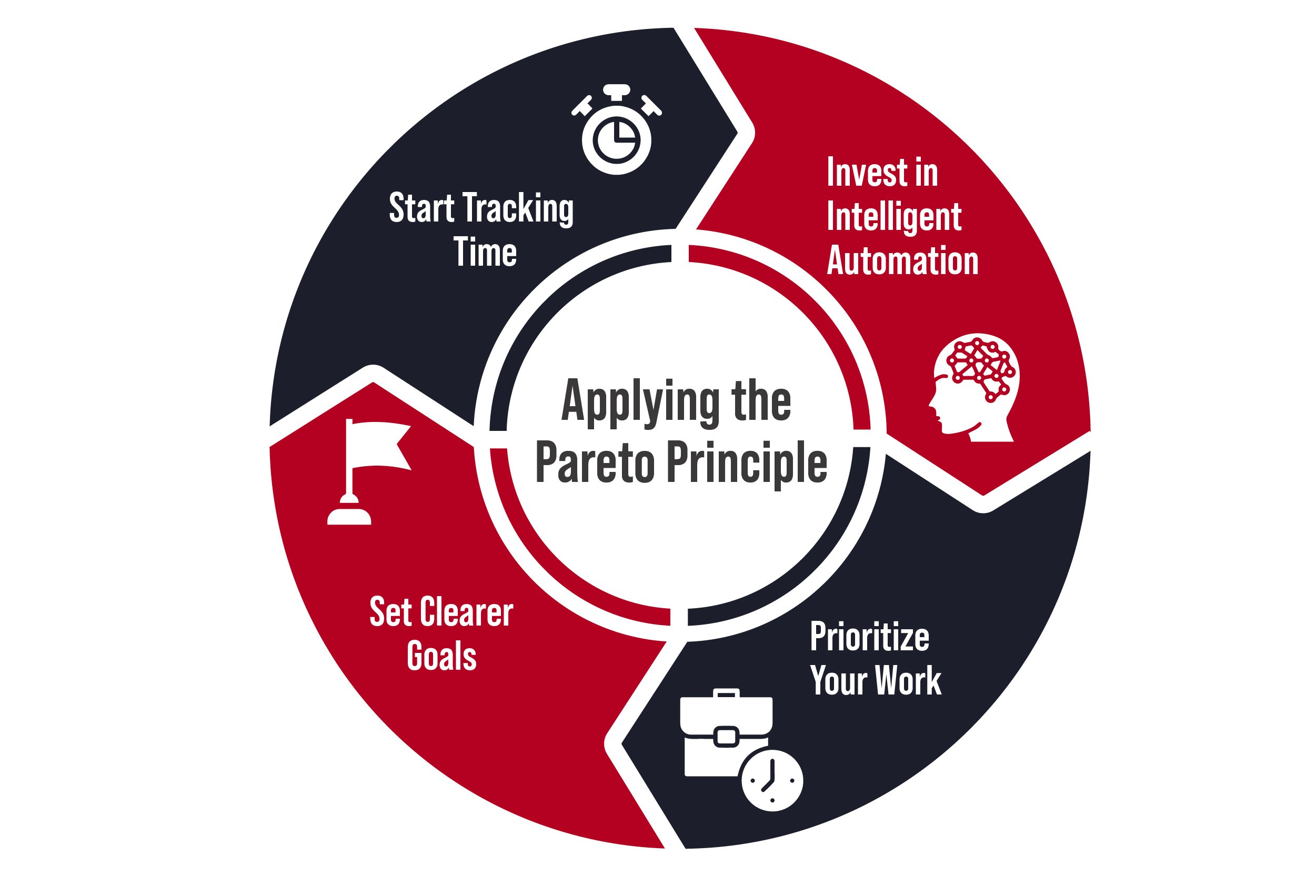You pour untold effort into running your business, but what if only a fraction of your hard work paid off? It may seem unlikely, but this is precisely the case according to the Pareto principle. If you're trying to build a more productive enterprise, cultivating a deeper understanding of the Pareto rule is a good start.
How does the Pareto distribution, also known as the 80/20 rule, operate in real-world situations, and how should it inform your leadership processes? Here are a few insights on optimising efficiency by accounting for how you work – and uncovering which of your productivity strategies work best.
The 80/20 Rule Simplified

The main idea behind the Pareto distribution is that a minority of your efforts – the 20 per cent – will produce the majority of the favourable results you seek – the 80 per cent. Although those percentages aren't always set in stone, the rule crops up repeatedly in countless domains, including business.
You might notice that a scant few of your most loyal customers produce the bulk of your sales revenue. Or you might discover that for all the money you spend on digital outreach and advertising, only a few campaigns generate the hype and engagement that generate viable leads.
Again, the exact distribution doesn't matter unless you're trying to optimise performance from a statistical standpoint. In most cases, the fundamental concept to remember is that some business endeavours are hit or miss. It's up to you to identify the standouts and cultivate a working environment that lets you reproduce them.
Why the Pareto Rule Needs to Be Part of Your Productivity Outlook
Should you bother with the Pareto principle? After all, optimising a workplace for efficiency is easier said than done. Even if you know certain practices promote productivity, profitability, or some other desirable outcome, it's not always obvious why the 20 per cent is so successful – or even where to begin finding out. In other words, the magnitude of the problem might make continued ignorance seem appealing.
On the other hand, the rule exemplifies how much of your diligence goes to waste – and how in the dark you leave yourself by being unaware of the particulars. No matter how the exact percentages break down, you might still be spending the most significant chunk of your time and effort on work that yields suboptimal returns. Since you can't precisely dump your low-value customers (you don't know when they might join the 20 per cent) or ask Mr Zuckerberg to refund all of the money you spent on bad Facebook ads (he won't), it'd be pragmatic to learn to spot the stellar performers in advance.
How to Apply the Pareto Distribution to Make Your Business More Productive
Leveraging the Pareto distribution goes beyond identifying which aspects of your business offer the biggest bang for your buck. In many cases, drawing such distinctions isn't even the hard part – You probably already have an intuitive feel for which strategies work and which need more tweaking. Now, it's time to build on that intuition with actionable conclusions:

Start Tracking Time

Tracking your time spent working and categorising the resulting data is essential to understanding where your effort is best spent. In addition to clarifying which projects and tasks contribute to specific outcomes, exhaustive time tracking elucidates the categorical breakdowns that naturally describe how you work – shedding more light on what goes into that mystical 20 per cent.
Time tracking can revolutionise your business outlook. For instance, you might discover that you devote more time than you anticipated to tasks that tend to elude quantification, like communicating with customers or handling rote paperwork between other jobs. Time tracking helps you control these productivity black holes before they drain your workplace dry.
Invest in Intelligent Automation

Using automation is the rational complement to tracking time. By using AI-powered software to supplement your workforce, you simultaneously boost efficiency and equip yourself with a more extensive performance track record for more intelligent decision-making. You'll also find it easier to experiment with ideas that might not make it to 20 per cent status yet still prove worthy of exploration.
Letting a machine handle things like organising documents, flagging items for review, replacing physical signatures or notifying clients when they need to sign paperwork can free up the time required to dig into more involved tasks. Since these jobs often produce significant results, why not give yourself more flexibility to complete them? Staying ahead with the cloud by letting your team spend less time on unnecessary tasks is also a great way to improve morale.
Prioritise Your Work

Work prioritisation is a broader example of the philosophy behind automation – both revolve around using time efficiently. Whether you're an IT admin trying to keep a business safe from hackers or a lawyer investigating possible legal defence strategies, you only have so much time to explore your options, and you need to use them as wisely as possible.
Organising your work in its priority helps you make the wisest possible decision when you suddenly find yourself short-handed and pressed for answers at crunch time. Although we noted earlier that it's impractical for most businesses to focus solely on the winning ideas, prioritisation helps your efforts in these areas go further.
Set Clearer Goals

Everyone loves goal setting, but not everyone is willing to be utterly above-board about it. It's all too easy to institute vague, fuzzy objectives that let you pat yourself on the back regardless of how they play out, but you're only cheating yourself in the process. Hence, utilise workplace efficiency tips like resource leveling and creating weekly workplans to maximise productivity.
Reframe the productivity conversation to focus on tangible metrics, like time tracking data, automated reports, and priority-ranked work performance feedback. Being honest with the numbers lets you set goals more rigorously and stick to them more faithfully using business management software.
Optimise for the 80/20 Rule With Tessaract
Tracking time, implementing sound automation, prioritising work properly, and honing your goal-setting practices can seem like life-changing undertakings. Tackling such hefty jobs takes more than mere effort: You'll also need to change how you gauge productivity fundamentally.
Want to stay on top of the data that reveals how the Pareto distribution impacts your firm? You don't have to settle for guesswork. Equipping your team with tools that make it simpler to work efficiently is the smartest choice.
Tessaract gives businesses the power to integrate advanced metrics and workflow oversight practices into the core practices they engage in daily. It makes time tracking an afterthought, automates complex workflows, and learns from your habits to help you cultivate sustainable, friction-free prioritisation rubrics.
When it comes to setting goals your organisation can live up to, Tessaract empowers you to implement lasting, positive changes. Schedule a trial today to make the most of your efforts.